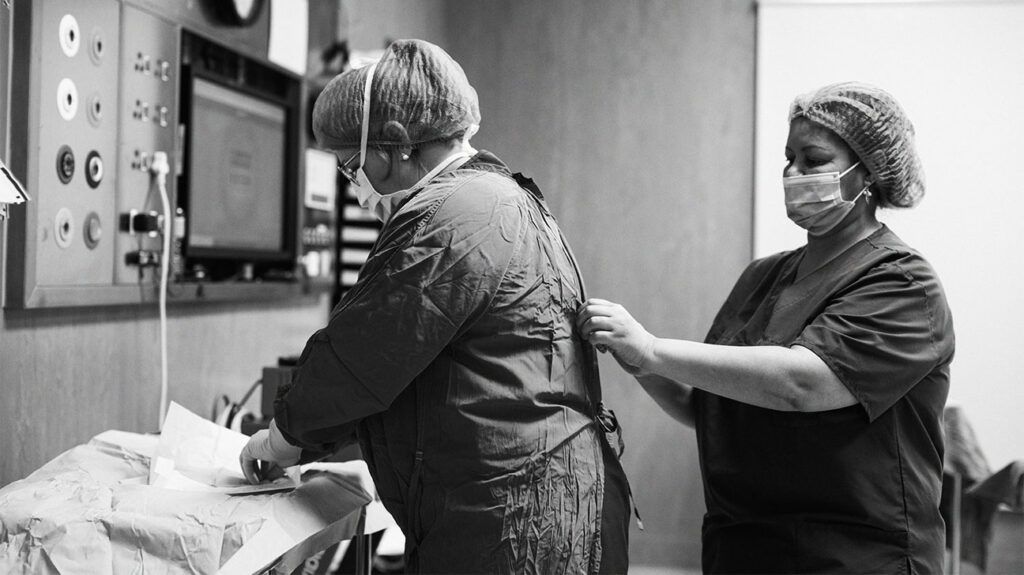Bypass surgery is a type of open-heart surgery. Surgeons may use several different types of bypass surgeries to repair or replace the heart.
Open-heart surgery is an operation where surgeons repair or replace a person’s heart. They surgically open the chest to reach the heart more easily.
Bypass heart surgery is a type of open-heart surgery in which surgeons create new blood flow paths to improve blood flow to the heart. Depending on a person’s circumstances, surgeons may use different types of bypass heart surgery.
This article discusses what bypass surgery is and when a person needs it. It also explains what open-heart surgery is and when a person requires it. Finally, it looks at the differences between the two procedures, their outlooks, and recovery.

Bypass surgery is a medical procedure that
The full name for bypass surgery is heart bypass surgery, or coronary artery bypass grafting (CABG). The most common form of CABG is open-heart surgery.
During CABG, surgeons take healthy blood vessels from another part of the body. These blood vessels normally come from the arteries in the arm, chest, or veins in the legs. The surgeons operate to connect them to blood vessels near and below the blocked artery. This creates a new route for blood to the heart.
Learn more about heart bypass surgery.
When is it needed?
A person
Coronary heart disease is a condition where a person’s arteries cannot deliver enough oxygen-rich blood to the heart.
Open-heart surgery is any kind of surgery in which a surgeon makes a large cut, or incision, in a person’s chest to allow them
Healthcare professionals use medication to stop a person’s heart during surgery. This makes it easier to perform the operation. A heart-lung bypass machine keeps oxygen-rich blood pumping through the body. When the surgeon finishes the operation, a person’s heart normally restarts on its own. If not, a surgeon uses mild shocks to restart it.
Open-heart surgeries
Learn more about open-heart surgery.
When is it needed?
A person may need open-heart surgery as part of several different procedures to treat heart conditions, such as:
- CABG to treat coronary heart disease
- heart transplant to treat heart failure
- heart valve repair or replacement to treat heart valve diseases
- maze procedure to treat atrial fibrillation
- replacement artificial heart or heart assistance device to treat heart failure
- to treat aortic diseases such as aortic aneurysms or dissections
Surgeons
If a surgeon instead performs off-pump CABG, a person’s heart keeps beating throughout the procedure. This procedure may be more difficult for the surgeon. However, it may be safer for some people who have a higher risk of complications from using a heart-lung bypass machine. These may include:
- older adults
- people who have:
- ventricular dysfunction, or a weak heart pump
- diabetes
- kidney disease
- chronic lung disease
After bypass surgery, a person will typcially stay in an intensive care unit for
The individual may then recover at home. They may need
Healthcare professionals will tell them how to care for and cope with the after-effects of their surgery. They will also tell them how to recognize signs of infection or other complications. The person may have some discomfort and pain after surgery.
Signs of infection
It is important to be aware of the signs of infection around the surgical wound. These signs include:
- the skin around the incision is red or discolored
- the skin around the infection is sore, swollen, or hot to the touch
- the incision has liquid, such as green or yellow pus, coming out of it
- the individual feels generally unwell or has a fever
If a person experiences any of these symptoms, or if their incision opens, they should contact their healthcare professional right away.
A person will also have regular follow-up checks with healthcare professionals. These checks monitor recovery and help to prevent further heart problems.
They may include aftercare steps, such as:
- regular blood or heart tests to check how their heart is working, such as:
- electrocardiogram
- echocardiography
- stress tests
- taking medication
- lifestyle changes, such as:
- stopping smoking
- diet changes
- physical activity
- stress management
- improving sleep quality
- cardiac rehabilitation — medically supervised programs to help people recovering from heart problems
A person’s recovery, outlook, and
- heart condition
- type of surgery
- overall health
Because there are several types of bypass surgery for people with different conditions, there does not appear to be one overall survival rate.
However, a
Can bypass surgery be done without opening the chest?
Surgeons
They also include robotic CABG surgery, where surgeons use a remotely controlled robot and a small chest opening to operate.
What are the two types of bypass surgery?
The
Surgeons may use another technique known as an off-pump procedure. With this approach, they do not need to stop a person’s heart to operate on it.
How serious is bypass surgery?
Like any surgery, bypass surgery
Cardiovascular health resources
Visit our dedicated hub for more research-backed information and in-depth resources on cardiovascular health.
Bypass heart surgery is a type of open-heart surgery. During open-heart surgery, surgeons open a person’s chest in order to operate on their heart.
Using these operations, they improve blood flow to a person’s heart by bypassing blocked or narrowed arteries. Surgeons can use different kinds of methods to perform these surgeries. Some methods may use a machine to pump blood during the surgery as the person’s heart is stopped.
A person may need this surgery to treat several different heart conditions. Their outlook can vary with their health, heart condition, and the type of surgery they need.
